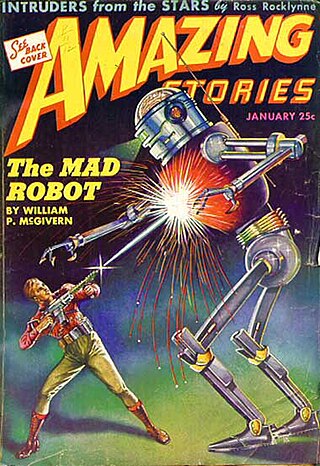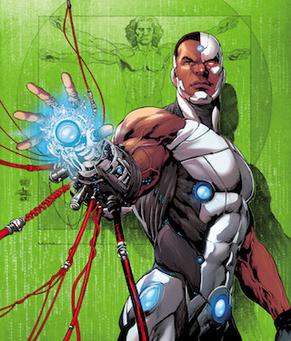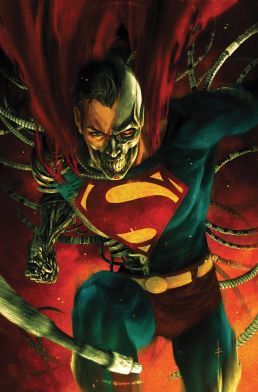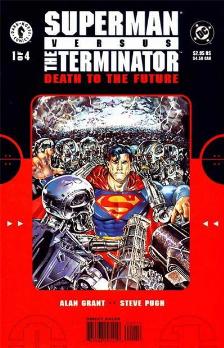
An android is a humanoid robot or other artificial being often made from a flesh-like material. Historically, androids existed only in the domain of science fiction and were frequently seen in film and television, but advances in robot technology have allowed the design of functional and realistic humanoid robots.

Rutger Oelsen Hauer was a Dutch actor. In 1999, he was named by the Dutch public as the Best Dutch Actor of the Century.

Apocalyptic and post-apocalyptic fiction is a subgenre of science fiction in which the Earth's civilization is collapsing or has collapsed. The apocalypse event may be climatic, such as runaway climate change; astronomical, such as an impact event; destructive, such as nuclear holocaust or resource depletion; medical, such as a pandemic, whether natural or human-caused; end time, such as the Last Judgment, Second Coming or Ragnarök; or any other scenario in which the outcome is apocalyptic, such as a zombie apocalypse, cybernetic revolt, technological singularity, dysgenics or alien invasion.
A cobalt bomb is a type of "salted bomb": a nuclear weapon designed to produce enhanced amounts of radioactive fallout, intended to contaminate a large area with radioactive material, potentially for the purpose of radiological warfare, mutual assured destruction or as doomsday devices. There is no firm evidence that such a device has ever been built or tested.

Strange and exotic weapons are a recurring feature in science fiction. In some cases, weapons first introduced in science fiction have been made a reality; other science-fiction weapons remain purely fictional, and are often beyond the realms of known physical possibility.

Cyborg is a superhero appearing in American comic books published by DC Comics. The character was created by writer Marv Wolfman and artist George Pérez, and first appeared in an insert preview in DC Comics Presents #26. Originally known as a member of the Teen Titans, Cyborg was established as a founding member of the Justice League in DC's 2011 reboot of its comic book titles.

Henry "Hank" Henshaw is a supervillain appearing in American comic books published by DC Comics, and normally goes by the name Cyborg Superman. Created by writer-artist Dan Jurgens, the character originally appeared primarily as an enemy of Superman, however in recent years he has also been an enemy of the Green Lantern Corps.

The militarisation of space involves the placement and development of weaponry and military technology in outer space. The early exploration of space in the mid-20th century had, in part, a military motivation, as the United States and the Soviet Union used it as an opportunity to demonstrate ballistic-missile technology and other technologies having the potential for military application. Outer space has since been used as an operating location for military spacecraft such as imaging and communications satellites, and some ballistic missiles pass through outer space during their flight. As of 2018, known deployments of weapons stationed in space include only the Almaz space-station armament and pistols such as the TP-82 Cosmonaut survival pistol.

Nemesis is a 1992 American cyberpunk action film directed by Albert Pyun and starring Olivier Gruner, Tim Thomerson, Cary-Hiroyuki Tagawa, Yuji Okumoto, Marjorie Monaghan, Brion James and Deborah Shelton. Set in a near future world populated by androids, the film centers on Alex Rain (Gruner), a cybernetically-enhanced, ex-counterterrorism operative charged by his former employers with assassinating his former lover, the leader of an underground militant group. This is the first installment in the Nemesis film series, and was followed by four direct sequels and a spinoff film. After premiering in Japan, it was released in the United States by Imperial Entertainment in January 1993.
Albert Pyun was an American film director who made low-budget B-movies and direct-to-video action films.

Superman versus The Terminator: Death to the Future is a 2000 four-part comic book crossover written by Alan Grant, with pencils by Steve Pugh and inks by Mike Perkins.

GUNHED is a 1989 Japanese science fiction tokusatsu mecha action film directed by Masato Harada.

Men in Black: Alien Attack is a shooting interactive dark ride located at Universal Studios Florida in Orlando, Florida, based on the film, Men in Black, itself based on the original comic book of the same name created by Lowell Cunningham. The ride opened in 2000 after a five-year development process. The ride has generally been well received, winning an Outstanding Achievement award from the Themed Entertainment Association.

Skynet is an artificial neural network-based conscious group mind and artificial general superintelligence system that serves as the antagonistic force of the Terminator franchise.

Scorcher is a 2002 science-fiction disaster film directed by James Seale and starring Mark Dacascos, John Rhys-Davies, Jeffrey Johnson, Tamara Davies, Mark Rolston, G.W. Bailey, Thomas F. Duffy, and Rutger Hauer. It was first released in the United States in 2002. It concerns a group of scientists who discover, after a disastrous nuclear accident, that the Earth's tectonic plates are shifting and creating immense pressure that will destroy the Earth in a fiery global eruption, and a few top scientists must find a way to stop it.

"Robot Chicken: Star Wars Episode II" is a 2008 episode of the television comedy series Robot Chicken, and the sequel to the Annie Award winning "Robot Chicken: Star Wars", which aired as a one-off special during Cartoon Network's Adult Swim block on November 16, 2008. Like "Robot Chicken: Star Wars", it has been released on its own DVD on July 21, 2009, and will not be part of a season box set. The DVD contains the original broadcast version, and the "Extended Version", which features an additional 15 minutes of footage cut from the broadcast version. It was nominated for a 2009 Primetime Emmy Award for Outstanding Animated Program.

Centurions is an American science fiction animated television series produced by Ruby-Spears and was animated in Japan by Nippon Sunrise's Studio 7. The series began in 1986 as a five-part mini-series and was followed with a 60-episode series. The series was story edited by Ted Pedersen and written by several authors, including prolific science fiction writers Michael Reaves, Marc Scott Zicree, Larry DiTillio and Gerry Conway.















